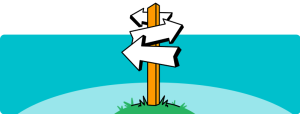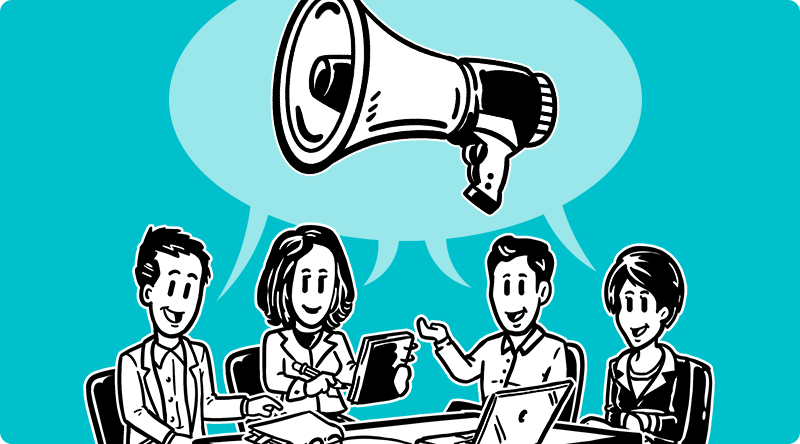6 of the best practices for a successful content marketing plan
Can you imagine a day without the internet? No, right? The mere feeling of remaining detached from the digital world is frightening, and in such a scenario, every aspect of the economy has gone online, especially the business landscape. Nowadays, having a web presence has become mandatory for entrepreneurs, as small businesses consider a website helpful in realizing their goals. But, being online isn’t sufficient as you need to attract, retain, and convert potential leads as well, and here comes the power of a well-structured content marketing plan.
Content Marketing Is A Buzzword But How Would You Define It?
In simple terms, you can say that content marketing is compelling storytelling. Leveraging a variety of content such as blogs, videos, eBooks, infographics, etc. to grab and retain customers also comes under the umbrella of content marketing as it helps in:
- Generating quality leads
- Boosting conversions
- Building a rapport with your potential customers
There’s no doubt that content is the king, but producing random content shouldn’t be your priority. Focus on offering quality content to optimize SEO efforts and attract the right leads. But this requires tons of research and a holistic content marketing plan.
Now, What’s A Holistic Content Marketing Plan?
A comprehensive content marketing plan focuses on producing and disseminating valuable content for encouraging prospects to take a specific call-to-action and drive revenue by maximizing conversions. To create a refined content marketing plan, you need a robust checklist comprising the best practices and tactics to leverage for attracting and retaining quality leads through content.
How Would You Define A Content Marketing Checklist?
Well, why do you use a checklist for any task? Because they help in breaking down a complex task in logical small steps that you can follow easily. Similarly, content marketing is an extremely competitive marketing practice; hence a checklist can help you in ensuring that the tasks are leading in the right direction every time!
Irrespective if you are a content marketer, writer, or even an entrepreneur, this checklist can be the game-changer for your business. So, let’s get rolling then and answer the below-given questions to figure out a robust content marketing plan:
1. Do You Know Your Audience Profile & Their Specific Needs Or Pain Points?

This might sound like a silly question, but it’s the most important one in the checklist. Getting an idea of your audience persona is very important because there’s an entirely different set of content marketing tactics to attract B2B vs. B2C buyers, and you can’t mix them. Studying the buyer persona starts with discovering the following factors:
- Age
- Demographic details
- Gender
- Buying habits, preferences, problems
- Professional niche
- Behavior
- Motivations
Understanding your customer profile helps in:
- Align your content marketing plan with their specific preferences and objectives.
- Attract potential leads and nurture them to convert into paying customers by offering quality content.
- Identify the needs and pain points of your prospects’ to understand why they want to consider your products or services. It helps you to offer them what they are looking for.
Identifying the specific needs and problems of your buyers isn’t a piece of cake, and hence you need a couple of tried and tested techniques of doing that:
a. Conduct Surveys
Creating an online survey is one of the most effective tactics to gather information about your potential customers. You can use any one of the free survey tools like SurveyMonkey, Typeform or Typeform alternatives and ask your target audience these three key questions:
- What are their demographic details including their age, profession, education, location, etc.?
- What are their biggest desires or problems, and are they willing to pay for solving their pain points?
- What kind of content, as in blogs, articles, or courses would they want to undertake?
Besides, make sure to add both open-ended and closed-ended questions in your survey as it will let you receive a variety of input. Now, it’s the time to send the survey to your target audience, and for this, you must leverage one of the email outreach tools. It can help you in sharing the questionnaire with thousands of people in minutes, and you can even send personalized reminders and follow-up emails to maintain the connectivity.
b. Study Audience Comments/Question On Your Niche-Specific Forums & Communities
Visiting your industry-specific groups and forums where trending topics are discussed actively can be your key to observe what’s trending and observe the issues or questions people are raising. Quora and LinkedIn are two of the most popular platforms where you can start.
c. Keep A Sharp Eye On Your Competition
Spying your competition is an evergreen technique to unearth potential goldmines where you can spot and grab thousands of leads. So, identify the top keywords for which your competitors are ranking and keep a tab on their popular social media posts, which will give you an idea of what kind of content your target audience prefers.
d. Collaborate With Your Sales Team
Collaboration between your content marketing and sales teams is a great idea because the sales professionals can be the best resource to provide you with insights on what your target customers are looking for. Based on their input, you can quickly fill the gaps in your current marketing strategy and produce quality content to educate your potential leads and turn them into customers.
e. Have A Word With Your Customer Support Department
The core task of your customer support team is to fix different issues that your buyers come-up with; hence no one else could be better than these professionals to help with identifying the pain points your customers are facing. After listing down the problems, you can create content that can fix these issues and answer the queries of your buyers.
2. Do You Have A Documented Holistic Content Marketing Plan?

Content marketing helps in achieving various goals ranging from boosting conversions to building thought leadership and increasing email subscribers to building brand awareness. But are you going to target each of these? Not possible, and hence it’s essential to first cherry-pick the specific business goals that you want to realize with content marketing. Also, goal-setting is vital as marketers with specific goals are much more likely to gain success.
To define clear content marketing objectives, answer the below-given questions:
- Where does your business stand now?
- What strengths and loopholes can you spot in your brand?
- Where do you want to see your business after a year?
Identifying the specific content marketing goal can help you in coming up with the right approach to grab quality leads and turn them into customers. Based on the specific objectives you want to achieve, document the entire content marketing strategy comprising the goals and efforts as it will help you in:
- Analyze your progress regularly.
- Monitor whether you are moving ahead in the right direction.
- Identify the loopholes in your content marketing efforts and spot the areas where you can improvise and refine the strategy.
3. Do You Have Any Idea Of Your Customers’ Journey?

After having an understanding of your potential buyer’s profile, you should know about their journey through your sales funnel. This has become even more important nowadays as the customers are forced to stay home due to the pandemic, and you need to look at ways to be in touch with them sensibly along with promoting your offerings.
Putting your audience first in everything you do is a responsible marketing tactic that requires you to understand the different phases of their journey and create content to match each of these stages. Let’s have a look at the various stages of buyers journey in brief:
- The awareness stage is the first stage when your audience is just exploring your offerings but isn’t aware of your existence. At this phase, you can provide prospects with animated or paper cut-out explainer videos, checklists, or infographics to convey your brand message in the best possible manner and evoke their interest in considering your products and services.
- Then comes the consideration stage, where the audience starts to know your business and even to explore your offerings. Here, the best content types can be blog posts and educational content to let them understand your brand even better.
- The third and final stage is the decision-making phase when the lead is on the verge of becoming a paying customer. At this stage, you need to be very careful as your content could be the reason for them to either buy your product or abandon the cart. Some of the most effective content types for this stage are:
- eBooks
- Webinars
- Case Studies
- Demos
- Industry report
- Interviews
Tailored content to suit specific stages helps in grabbing the attention of the right leads, and the chances of conversion increase.
4. Are You Sure Of Which Keywords Or Topics To Target?
Only if you are leveraging the right keywords and topics in your content, then you can expect to provide your target readers with the answers to their questions, which will fill your sales funnel with potential leads. You can use tools such as Google Adwords to filter the relevant keywords and topic ideas for producing quality content, which will be loved by Google as well as your audience both. Besides, choosing topics based on popularity, search volume, efficiency, and difficulty helps you in narrowing down your topic search and identifying:
- Headlines that resonate maximum within a particular market niche.
- Blogs and articles that can answer the key questions and issues raised by your target audience.
Is It Easy To Identify The Right Keywords & Topics For Your Content Marketing Strategy?
To discover the right keywords and content ideas for your niche, it’s essential first to understand the types of search categories:
1. Informational Searches: to learn something new or to get the answer to specific questions. Some examples of informational search keywords are:
- LCD Tv Reviews
- Symptoms of Migraine
- New York home prices
2. Navigational Searches: It’s done to locate a specific website. For example:
- Citibank log-in
- Amazon website
3. Transactional Searches: Here, the users’ intend to buy something or perform some web-mediated activity such as:
- Subscribe to The Times of India
- Buy sign boards online
- Get insurance quotes
Now, On Which Search Category Do You Need To Focus?
Your focus should be on the third category which is the transactional ones like:
- Buy Now
- Free Shipping
- Deals
- Subscribe
- Coupons
- Discounts

For identifying keywords having commercial intent, you can use Google Ads Keywords Planner or Google Analytics expert by following the below-given steps:
- Feed your primary keyword in the search bar, for instance, “salon services near me.”
- Click on the “Get Ideas” button, and there will be a range of keywords relevant to your search query.
Moreover, you can also conduct surveys or interviews with this tool and identify the transactional keywords in your niche by adding a couple of filters for your target buyers, such as:
- Demographic details
- Professional niche
- Lifestyle choices
- Common terms used by your buyers when in conversation with your customer support team.
- Pain points or problems
5. Can You List Down The Content Types You Have To Create?
There are great content types, but all may not work for you; hence you must know which ones to keep in your content arsenal. It’s always better to create promotional and informational both types of content for serving different audiences with varied interests and requirements. Let’s explore a couple of them in detail:
a. Have You Tried Videos Yet?
Users love watching videos and remember them for a longer span hence leveraging the power of interactive videos. Videos on your website’s landing page allow your customers to learn about your brand through hearing and seeing. And, you can highlight the perks of using your products or services in the best manner to convert leads into paying customers easily.
Moreover, along with the website, you can use videos on your social channels such as Facebook and Instagram. Creating long-form interactive podcast videos and integrating smaller segments of them on social media can let the audience who hasn’t seen the full version have access to your content, and even they can share the same.
To create videos for social channels, you can use one of the social media tools like Promo.com, which comes with a range of unique features and is easy to use. These tools help you in creating and publishing engaging content on your social profile to build brand awareness and expand the follower-base.
b. How About Engaging Infographics & Illustrations?
Visual content is much better in grabbing the attention of the audience as articles featuring infographics get more views than the normal ones. Going through plain articles feels mundane, but illustrations allow the readers to relay important information quickly and easily.
c. Have You Thought Of Creating Lead Magnets?
The ultimate goal of any business is to generate leads that can be nurtured to convert into buyers. Lead magnets are the type of content that you give your readers free of cost, but to access the content, they need to enter their email addresses. Lead magnets help you in growing your email subscribers, but you need to remember that your lead magnet solves a specific problem your potential customers are facing. Some examples of such content are:
- Webinars
- Email courses
- Video Tutorials
- eBooks
- Quizzes
- Handy guides
- Free Industry Reports
d. Would You Mind Going Live On YouTube, Facebook, Or Insta?
Nowadays, it’s all about how you showcase your brand and maintain a connection with your audience, and what’s better when this connectivity in real-time! Yes, going live on YouTube, Instagram, and Facebook is one of the most effective marketing techniques. Live sessions help you in providing your prospects with live content and creating a two-way dialogue with them. Some of the best live content ideas are:
- Webcasts or webinars
- Behind-the-scenes glimpses
- Ask Me Anything (AMA) sessions
Nowadays, live streaming has become even more effective as everywhere the pandemic is going on, which is the reason social networking and connecting with your prospects have become impossible. However, one of the best ways to keep in touch with your peers and maintain social connectivity while being locked-up is by going live on Facebook or Instagram.
You can use live sessions to keep your audience entertained when they are staying at home under quarantine, which will make them feel special and connected. This will let you foster a healthy relationship with your audience, which is the key to a loyal customer base.
e. Why Has User-Generated Content Become A Buzzword?
With so many tasks in hand, it becomes too tedious to come up with fresh content ideas every day; hence leveraging user-generated content comes handy. You can pick the posts your loyal followers have shared on social channels where they’ve written about your brand and add it to your content calendar. leveraging user-generated content is a win-win situation for you because the majority of the buyers consider UGC ratings or reviews before deciding to buy a product. Also, it helps you in creating a library of content resources and enhances your online brand reputation.
f. What About A Content Upgrade Plan?
As discussed earlier, creating fresh content every time isn’t an easy task, and here a content upgrade plan comes to your rescue. Here you need to provide your audience with a bonus content that is free to download aligned with one of your previously published articles. The bonus version of your content should be extremely actionable and relevant as its primary objective is to encourage your readers to take a specific action. That action may be subscribing to your email newsletter or watching a free demo of your newly launched product.
g. Considering Syndication Platforms, Isn’t A Bad Idea, Right?
Reaching out to every prospect manually isn’t possible,—all, and hence syndication channels can help you in connecting and sharing your content with a massive audience quickly. Syndication is one of the most effective lead generating strategies. You need to identify niche syndication channels with a huge audience base where you can share your content and reach out to thousands of quality leads at one go who can read your articles and become interested in buying your offerings.
h. Do You Also Think That Guest Posting Is Dead? If Yes, You Need To Change Your Mind!
Guest blogging is an age-old technique to earn brand recognition and establish credibility in your niche market by partnering with esteemed publications and contributing quality content for gaining backlinks to your website. Doing guest blogging might be considered time-consuming as finding reputed sites to collaborate with manually isn’t easy. But it helps you in various ways such as:
- Boost organic and quality traffic to your web portal.
- Increase your search engine rankings by acquiring high-quality backlinks from niche publications.
- Build thought leadership in your industry and boost your credibility by sharing your expertise in the form of informative and value-adding articles.
i. How About Creating An Optimized Landing Page For Lead Generation?
Along with refining your content marketing arsenal, it’s equally important to pay attention to optimizing your landing page. All you have to do it polish every element of your landing page for boosting conversions. One of the ways to do it is by integrating an engaging video for making customers stay on your landing page for longer. Some of the other tactics that you can use to optimize your landing page are:
- Minimalist design
- Clear Call-to-action button (CTA)
- Crisp copy and impressive headline
- Visually engaging images
- Social proof like customer testimonials for grabbing the attention of potential leads
Make sure that you A/B test your landing page to keep refining the design and copy and improvise the overall theme.
6. Are You Sure Of Which Content Distribution Channels You Will Use To Disseminate Your Content?

Once you have a documented plan of which kind of content you will be producing now it’s the time to identify the right channels to share and promote your content. There is a range of document automation platforms available for promoting your content from which you can choose one according to your budget and specific requirements:
a. Free/Owned Content Distribution Channels
- Google Plus
- Website
- Webinars/Events
- Newsletters
- Social media channels like Facebook, Twitter, Instagram, etc. are considered to be one of the most effective platforms as you can find half of the world’s population active on these channels.
b. Paid Channels For Content Distribution
- Banners, native or social media ads
- Content discovery publications
- Google Adwords
c. Earned Content Distribution Channels
- Organic mentions
- User-generated content
- Likes and Shares
- Reviews
- Comments
It’s recommended to embrace an 80-20 productive workflow where 80% of your efforts should go in creating quality content and the remaining 20 in sharing and promoting it on the right channels.
Are You Excited To Know The Bonus Tip?
The above mentioned six techniques as part of your content marketing plan make a solid checklist but requires a lot of effort and time. So, to minimize your effort it’s a great idea to choose one of the best marketing automation solutions that can automate the repetitive tasks and maximize the efficiency of your content marketing plan. Keep your budget and specific business requirements in mind when choosing a marketing automation platform. Also, list the answers to the following questions to narrow down your search criteria and pick the best software:
- Which specific tasks need to be automated? One can be sharing content across different social media channels or scheduling content calendars
- Which automation platform should you choose based on your budget and specific needs? A couple of good options are:
- Omnisend
- Automizy
- ACTITO
- SharpSpring
- Adobe Campaign
Time To Wrap Up!
Irrespective of which tactics from the above you will pick, be focused on answering your audience questions in the best possible manner for engaging with quality leads and nurturing them to convert into customers. The market landscape is dynamic, but the needs of your buyers will stay the same, so prioritize their needs and refine your content strategy accordingly to optimize conversions.
Author’s Bio
 Dhruv is a Content Marketer. He likes reading up on the latest digital marketing and social media trends. When not sleuthing for tips, he is chiseling his fitness-goals and traveling around the world.
Dhruv is a Content Marketer. He likes reading up on the latest digital marketing and social media trends. When not sleuthing for tips, he is chiseling his fitness-goals and traveling around the world.


